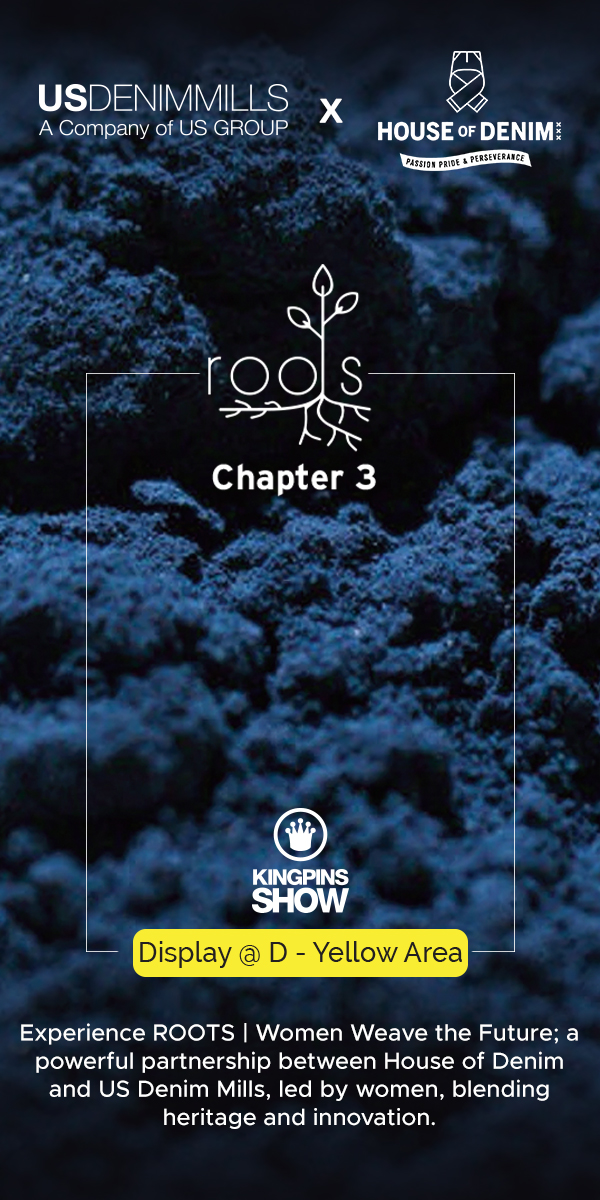Leaving ‘his or hers’ behind

The growing popularity of gender-free denim design highlights limitations in the traditional men’s-or-women’s approach to retail.
After several years of tentatively stepping into the gender-free zone, denim is claiming its place as a definitive genderless apparel category. It could even be said that it is reclaiming this position, if you go back to pre-1930s Levi’s, but women having to borrow their husband’s or brother’s jeans doesn’t quite feel the same.
In 2016, Zara’s launch of its Ungendered line put the Spanish brand among the first big-name high-street retailers to officially offer unisex jeans. Yes, the line was met with criticism for being too masculine, too plain, and too limited, but it was hard to deny that the move did break new ground.
Soon after, Guess, AG Jeans, Closed, and others, also announced unisex collections, and in 2019, H&M teamed up with Eytys for a gender-neutral line. Even Levi’s (that arguably started the his-and-hers split when it debuted Lady Levi’s in 1934), released its Unlabeled line in 2020. Last year, PacSun CEO Alfred Chang said gender-neutral was a growing category for the brand, reaching more than 20% of its offerings. This year has seen big unisex denim releases such as Everlane’s ‘Everyone — All Gender Collection’.
Some of these lines have since disappeared, while new unisex lines have appeared; collectively they show brands’ growing understanding that today’s shoppers want denims that reflect real-world diversity in lifestyle, tastes, sexual identity, gender fluidity, and an endless spectrum of body types.
We talked to two brands, Handz and Unspun, for which the gender-free approach to design is fundamental to their offerings, and to Denim Dudes founder Amy Leverton, whose writings on gender and denim remind us that jeans are and always have been about more than just style. What’s clear is while the details still need to be worked out, unisex design becomes an inevitable and necessary component — also more sustainable — component of addressing some of the unmet needs of denim customers.
Jeans to embrace all bodies
“We are thinking about future retail spaces, in which a gender-free area should be for all people in love with great denim, with pure and beautiful indigo,” Handz co-founder and designer Tilmann Wröbel tells Inside Denim. Mr Wröbel and his partner and manufacturer Themis Goudroubis just launched the new brand as a “genderless and modern” label. “On these racks, one should be able to find a pair of jeans that fits women and men, a single style and reference that [can] fit all.”
The pair were inspired to create Handz after experiences with clients revealed a void in the denim market. These voids, Mr Wröbel says, create frustration. “There are women in love with proper authentic Japanese denim, and who cannot find well-fitting heritage jeans. Then there are men who wish to wear a slim and stretch denim, right from the women's closet. It was really barking at us, that traditional retail is most of the time divided into women’s and men’s sections. This had to evolve.”
Historically, he says, most unisex jeans have been “more or less fitted for men” with minor modifications so that women can wear them, too. To offer a genuinely gender-free jean, Mr Wröbel explains it is necessary to analyse the bodies of men and women, “to understand how one sole denim product can gently ‘melt’ from men’s to women’s sizes, in the same grading chart, in the same style,” by taking into account factors such as waist, hip, legs, and appearance. “We have been working, fitting, calculating specs. The result is a non-gendered pair of jeans that embraces all kinds of bodies.”
Gender-free design is not only about gender, he points out. He and his partner want to “create garments for humans of all kinds, neutral so that they might be worn by men, women, any gender in between” but also for “the young and the old, the skinny and the curvy”.
“It’s important to me to be respectful to all the people who look for freedom to choose to wear — and fit into — a great pair of valuable denims,” says Mr Wröbel. “This is not just a new trend we are facing. We believe this is the next step into the near- and long-term future of our society.”
Why customised equals genderless
Custom-jeans maker Unspun presents its customers with a choice of ‘masculine’ or ‘feminine’ rather than men’s or women’s. Masculine fits are slightly loose, with more room in the thigh and crotch area, whereas a feminine fit is closer to the body. “Our software will make the jeans fit your body, regardless of your gender or age,” Annika Visser, brand lead at Unspun, tells Inside Denim. “It’s all about what you will feel most comfortable in.”
Once consumers of any sex have selected their preferred type of fit (along with waist rise and hem length), they use the brand’s app to complete a body scan which provides measurements for a fully customised pair of jeans, thus avoiding the traditional body-type conventions that have long made it difficult for consumers to shop across the aisle.
“When we started Unspun, we wanted to change the way that clothing is produced to solve the over-production issues of the fashion industry and make production more intentional,” says Ms Visser. Most people, she adds, struggle to find properly-fitting clothes. “We blame this on pigeonholing in the fashion industry, making us want to fit into cookie-cutter sizes.”
Educating customers that customised jeans are a form of gender-free design has proven to be a challenge. “Until recently we displayed all masculine and feminine cuts side-by-side on our website [but] we received feedback that shoppers were not understanding the value proposition, that the jeans will be made to fit anybody, no matter your size or gender,” says Ms Visser.
As a result, the collections have been split into masculine and feminine fits as the team reconsiders how best to present the collections going forward. But the company’s ethos is clear: Discrimination and bias are inherently baked into the fashion industry, Unspun states on its website, we need to get rid of sizes altogether and instead custom-fit products around actual people in real time.
Societal shifts
For Amy Leverton, denim expert, founder of Denim Dudes, and author of the book by the same name, an increasing presence of gender-free jeans is great news for the industry, but there is still progress to be made both in terms of perception and design.
It is “a step towards inclusivity, and of course this is the movement that's driving this expanding market,” she says. While women have been wearing men’s jeans since the 1920s, she points out, “the most positive shift that's happened in recent years is towards a true genderless approach where men are more comfortable with the concept of ‘femme’.” A shift in societal stigma associated with feminine traits will “break down traditional gendered design norms,” she says, pointing to labels like Hardeman, Y Project and Telfar — brands whose denim designs consistently subvert those norms — as already exemplifying such a shift.
The logistics are tricky, though. “The hardest challenge for brands is in the engineering of gender-free jeans.” Of the unisex jeans she has tried, the “intricacies of pocket shape and positioning, silhouette, fastening” are difficult to “get right for everyone”.
She expects this to improve as designers and manufacturers gain deeper understanding of their target consumers. “I believe we’re in a pivotal moment in time when it comes to gender politics,” she says. “If a brand wants to invest in genderless clothing and everything that that term stands for, they need to consult with designers who have a first-hand understanding of gender fluidity.”
Another weapon in the sustainability fight
As Unspun’s Ms Visser mentioned, designing non-gender-specific apparel can also offer a more sustainable approach to manufacturing. By eliminating the male/female divide, brands double the number of potential buyers (and the number of those next in line to give a piece a second life).
Adrien Roberts, international director of education at Accademia Costume & Moda in Rome and Milan, recently spoke on this topic at a fashion industry conference in Milan. “Why are we splitting objects into genders? What is a female shoe, what is a female bag? It’s a container for goodness sake,” he said to the audience. “Isn’t it a question of size and shape? A question of what do you want? It would be more sustainable if we were living in a more gender-fluid world where we promoted [products] by size and fit rather than gender.”
The topic of sustainability is vast and there is no single solution, he said, but “at least approaching it from a fluid point of view suddenly opens your markets to 100% of the world, rather than defining something as typically male or typically female.” Simply offering a wider size range, he said, would be “more sustainable all the way through”.
De-gendered retail spaces
Currently, most mainstream brands’ websites and stores still divide their offerings into men’s and women’s sections, but a growing number are recognising the limitations of this traditional approach and Mr Wröbel’s vision of Handz’s gender-free retail spaces as the norm is likely not too far in the future.
For, as Ms Visser says, “We are all unique and different. Why should our clothing be made according to templates and conform to a set of standardised sizes and shapes?”
New label Handz is “genderless and modern”.
Photo: Patrick James Michel












